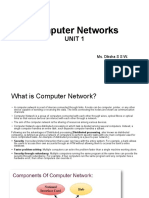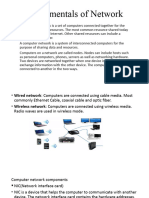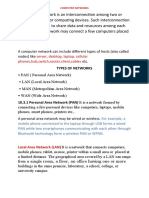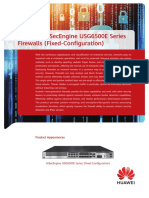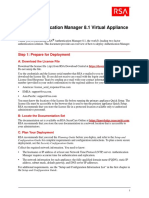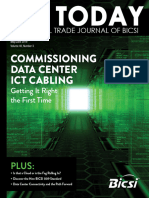0% found this document useful (0 votes)
41 views18 pagesNetwork Essential Unit-1
A computer network is a group of interconnected computer systems that can communicate via hardware and software. Key components include switches, routers, servers, and clients, which facilitate resource sharing and communication. Various network types exist, such as LAN, WAN, and WLAN, each serving different connectivity needs, and wireless networks utilize radio waves for communication.
Uploaded by
aniruddh2573Copyright
© © All Rights Reserved
We take content rights seriously. If you suspect this is your content, claim it here.
Available Formats
Download as PDF, TXT or read online on Scribd
0% found this document useful (0 votes)
41 views18 pagesNetwork Essential Unit-1
A computer network is a group of interconnected computer systems that can communicate via hardware and software. Key components include switches, routers, servers, and clients, which facilitate resource sharing and communication. Various network types exist, such as LAN, WAN, and WLAN, each serving different connectivity needs, and wireless networks utilize radio waves for communication.
Uploaded by
aniruddh2573Copyright
© © All Rights Reserved
We take content rights seriously. If you suspect this is your content, claim it here.
Available Formats
Download as PDF, TXT or read online on Scribd
/ 18





